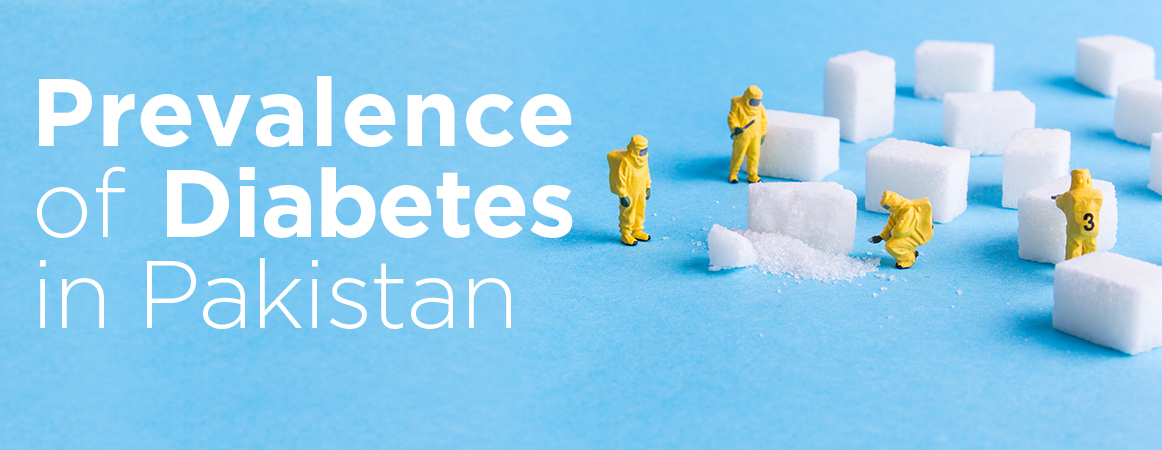
Type 2 diabetes mellitus (T2DM) is one of the most serious public health concerns around the world, particularly in low and middle-income nations like Pakistan.
Due to complications linked with Type 2 diabetes mellitus, it has a significant impact on a person’s life as well as on society as a whole.
Diabetes was once thought to be a disease in economically developed countries, but as a result of urbanization, dietary changes, and the adoption of a more inactive lifestyle by the majority of people, the prevalence of diabetes mellitus in Pakistan has risen.
In Pakistan, more than a quarter of adults with diabetes are undiagnosed. If diabetes is not detected and managed effectively, it can develop into serious and life-threatening complications such as heart attack, stroke, kidney failure, blindness, and lower-limb amputation. As a result, the quality of life suffers and healthcare costs rise.
Type 2 diabetes mellitus, among other forms, is the most common type of diabetes in Pakistan. Diabetes is linked to a family history of diabetes, BMI, high cholesterol, high triglycerides, high LDL, and low HDL levels. Diabetic people are more likely to have hypertension, as well as other comorbidities.
The Pakistani population has a high prevalence of Type 2 Diabetes Mellitus. Diabetes can be managed in our community with a healthier lifestyle and proper medical monitoring.
In 2015, it is estimated that 7 million people had diabetes. Diabetes risk factors include a family history of diabetes, a high BMI, and other sociodemographic factors. Diabetic complications such as nephropathy, neuropathy, retinopathy, cardiomyopathy, and gestational diabetes mellitus may be caused by prolonged exposure to high glucose levels.
The overall weighted prevalence of diabetes was 26.3 percent, with 19.2 percent having previously been diagnosed and 7.1 percent newly diagnosed. Diabetes was found in 25.3 percent of rural Pakistanis and 28.3 percent of urban Pakistanis, respectively. Pre-diabetes was 14.4% of the population (15.5 percent in urban areas and 13.9 percent in rural areas).
With 7.5 million diabetes patients (20–79 years) and a 6.9% diabetes prevalence (20–79 years), it ranks 18th out of 21 countries in 2017.
No stats/facts/ratio available
In 2019, over 19 million adults in Pakistan were estimated to be living with diabetes, placing them at risk of life-threatening complications. 8.5 million of these 19 million people remain undiagnosed.
A complex interaction of socioeconomic, demographic, environmental, and genetic factors is driving the rise in the number of people with type 2 diabetes. Urbanization, an aging population, decreased levels of physical exercise, and rising levels of overweight and obesity are all major influences. Type 1 diabetes is also on the rise, for unexplained causes.
In Pakistan, the prevalence of type 2 diabetes has climbed considerably, with 33 million adults suffering from the disease, with a 70 percent increase since 2019.
There is a lot that can be done to lessen the effects of diabetes. It is suggested that type 2 diabetes may often be avoided by early detection and access to adequate care. This can help people avoid or delay diabetes-related problems.
In Pakistan, the rising prevalence of diabetes is leading to an increase in eye illnesses, raising the risk of sight-threatening consequences. Diabetic retinopathy (DR) is the most common cause of vision loss in individuals around the world. The blood vessels in the eye become enlarged and leaky in diabetic retinopathy. Diabetes retinopathy eventually leads to irreversible blindness.
Diabetic nephropathy is the leading cause of end-stage renal disease around the world including Pakistan. It is estimated that by 2035, the prevalence of diabetic nephropathy in Pakistan is expected to rise to 13%, putting Pakistan in the top ten countries with the highest diabetes prevalence. These worrisome figures are concerning for our country.
The chance of getting retinopathy in someone with diabetes is directly proportional to the amount of time they have had diabetes. Retinal damage can occur in both type 1 and type 2 diabetes.
FAQ:
Pakistan is on the verge of a diabetes epidemic, with the fourth-highest diabetes prevalence rate in the world. The rate is rapidly increasing: by 2045, Pakistan will have more diabetic adults than the United States.
The prevalence of diabetic foot in Pakistan ranged between 4.0 and 10.0 percent. In Pakistan, the amputation rate is said to be high, ranging from 21.0 percent to 48.0 percent. Foot ulcers are believed to be the leading cause of amputation in persons with type 2 diabetes mellitus (T2DM).
Diabetes is closely linked to obesity, and it raises the risk of breast cancer, particularly in postmenopausal women. Patients with breast cancer who simultaneously have diabetes are about 50% more likely to die from any cause.
Gestational diabetes (GDM) prevalence in Pakistani women could be significantly higher than previously thought. Furthermore, Type 2 diabetes is increasingly being diagnosed at a considerably younger age in our population, indicating a larger prevalence of GDM.
Various factors can disrupt skin health, leading to a myriad of skin problems. Understanding the…
For those suffering from kidney stones, the pain can be excruciating, impacting daily life and…
Acidity, also known as acid reflux or heartburn, is a common digestive disorder. It happens…
Tonsillitis, an inflammation of the tonsils, can range from a minor nuisance to a serious…
Bawaseer, also known as hemorrhoids, is a medical condition characterized by swollen or inflamed veins…
Millions of individuals worldwide suffer from skin allergies, sometimes referred to as allergic dermatitis. From…